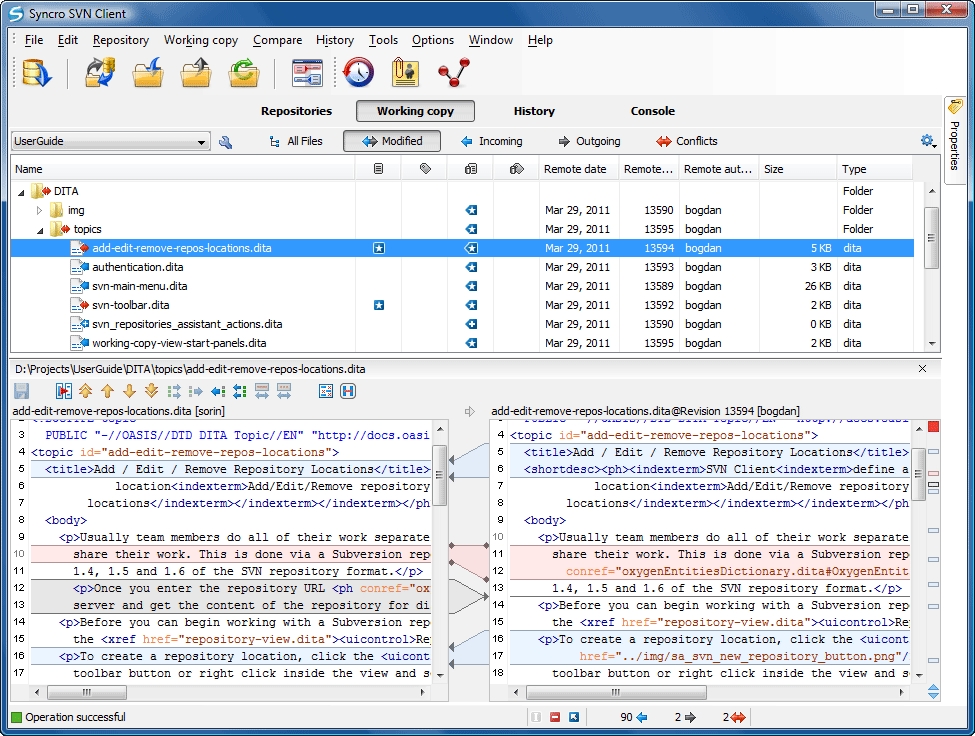

For more comprehensive documentation, see The SVN Book. This document is not a complete and robust explanation for using SVN, but more a quick primer to get started with plugins on. If you’re new to SVN, we recommend reviewing a comparison of SVN clients before deciding which is best for you. It can be used via command line, or one of numerous GUI applications, such as Tortoise SVN, SmartSVN, and more. Parser.SVN, or Subversion, is a version control system similar to Git. Parser.add_option(-p, -password, type=str, dest=svn_password, help=SVN login password) Parser.add_option(-u, -username, type=str, default=default_username, dest=svn_username, help=SVN login username (default: %s) % default_username) Parser.add_option(-l, -local_path, type=str, default=default_checkout_path, dest=local_path, help=Local checkout path (default: %s) % default_checkout_path) Parser.add_option(-r, -repo_url, type=str, default=default_repo_url, dest=repo_url, help=Repository URL (default: %s) % default_repo_url) Sparse_checkout(options, client, repo_url, pruned_path, local_checkout_root) Revision = client.checkout(root_checkout_url, local_checkout_root, depth=)Ĭheckout_path_segments = checkout_path.split(os.sep)įor i, segment in enumerate(checkout_path_segments): Root_checkout_url = os.path.join(repo_url, checkout_path).replace(\, /) Print - Finished updating %s to revision: %d % (new_update_path, revision.number)ĭef group_sparse_checkout(options, client, repo_url, sparse_path_list, local_checkout_root):Ĭheckout_path = commonprefix(sparse_path_list)Ĭheckout_path = sparse_path_list.split(os.sep) Update_revision_list = client.update(new_update_path)
SVN CHECKOUT UPDATE
Print Will now update with recursive:, new_update_path New_update_path = os.path.join(new_update_path, leaf_segment) # Update the leaf path segment, fully-recursive Sparse_update_with_feedback(client, new_update_path) New_update_path = os.path.join(new_update_path, path_segment) Path_segments = sparse_path.split(os.sep) Revision_list = client.update(new_update_path, depth=)ĭef sparse_checkout(options, client, repo_url, sparse_path, local_checkout_root):
SVN CHECKOUT PASSWORD
Password = getpass.getpass(Enter SVN password for user %s: % options.svn_username)Ĭlient.callback_get_login = lambda realm, username, may_save: (True, options.svn_username, password, True)ĭef sparse_update_with_feedback(client, new_update_path): Return sep.join(x for x in takewhile(allnamesequal, bydirectorylevels)) # XXX The os.monprefix() function does not behave as expected!īydirectorylevels = zip(*) Update with depth=infinity for the leaf directories Update with depth=empty for intermediate directoriesģ. Given a list of paths in an SVN repository, it will:Ģ.

This script makes a sparse checkout of an SVN tree in the current working directory. I wrote a script to automate complex sparse checkouts. svn – Can you do a partial checkout with Subversion?
SVN CHECKOUT FULL
… sparse directories (or shallow checkouts) … allows you to easily check out a working copy-or a portion of a working copy-more shallowly than full recursion, with the freedom to bring in previously ignored files and subdirectories at a later time. Subversion 1.5 introduces sparse checkouts which may be something you might find useful. This is an older and less flexible way to achieve a similar effect: svn checkout -non-recursive svn update trunk/foo That way you can see which directories exist in the repository.Īs mentioned in answer, you can also do a non-recursive checkout. I believe the following should do it: svn checkout -depth empty svn update -set-depth infinity proj/fooĪlternatively, -depth immediates instead of empty checks out files and directories in trunk/proj without their contents. Indeed, thanks to the comments to my post here, it looks like sparse directories are the way to go. Svn – Can you do a partial checkout with Subversion?


 0 kommentar(er)
0 kommentar(er)
